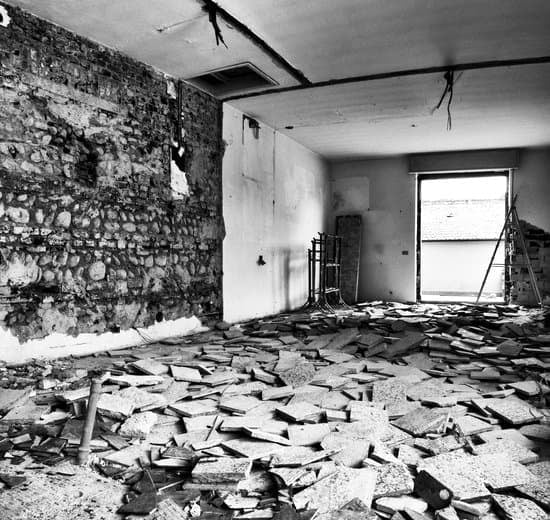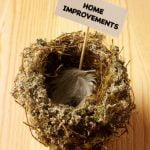When home improvement projects go wrong, it can turn into a nightmare for homeowners. From costly mistakes to delayed timelines, the consequences of a project gone awry can be overwhelming. This article will delve into the importance of proper planning when it comes to home improvement projects and offer insights on how to navigate through potential mishaps.
Proper planning is crucial when undertaking any home improvement project. From setting a realistic budget to choosing the right materials and hiring the right professionals, every step in the planning process is vital. Without thorough preparation, projects are at risk of going off track, leading to frustration and added expenses.
In this section, we will explore the key factors that contribute to successful home improvement projects. We’ll discuss how proper planning can prevent common mishaps and help homeowners stay on top of their renovation goals. Additionally, we’ll provide valuable tips on how to recognize warning signs that a project may be headed in the wrong direction, empowering readers with the knowledge they need to make informed decisions about their home improvement endeavors.
Signs That a Project Is Going Awry
Home improvement projects can go wrong for a variety of reasons, but there are often signs along the way that signal potential trouble. It is important for homeowners to be aware of these signs in order to take action and prevent further mishaps. Here are some common signs that a home improvement project is going awry:
1. Delays in Progress: One of the earliest signs that a project may be headed in the wrong direction is if there are consistent delays in the progress of the work. Whether it’s due to unavailability of materials, unexpected structural issues, or other unforeseen circumstances, delays can indicate that things are not going according to plan.
2. Poor Workmanship: Another clear sign of trouble is poor quality workmanship. If the finished product does not meet expectations in terms of functionality, durability, or aesthetics, then it may be an indication that the project is not being executed properly.
3. Budget Overruns: When a home improvement project starts to exceed its budget significantly, it’s time to take a closer look at what’s causing the additional expenditures. This could point to inefficient planning, unexpected problems arising during the project, or potentially even unscrupulous practices by contractors.
Being vigilant about these signs can help homeowners address issues before they escalate into full-blown disasters. It is crucial to communicate openly with contractors and stay involved throughout every stage of the project to ensure that any deviations from the original plan are addressed promptly and effectively.
Common Home Improvement Mishaps
Embarking on a home improvement project can be an exciting endeavor, but it can also be riddled with potential mishaps that could lead to disaster. One common mishap that homeowners encounter during home improvement projects is the underestimation of costs.
This often happens when individuals fail to properly budget for all aspects of the project, including materials, labor, and unforeseen expenses. Without a clear and realistic budget in place, a home improvement project can quickly spiral out of control and end up costing far more than originally anticipated.
Another common mishap is improper installation or construction. Whether it’s installing flooring, tiling, or cabinetry, improper techniques can result in shoddy workmanship that not only looks unappealing but also compromises the structural integrity of the home. This often occurs when homeowners attempt to DIY without the necessary skills or experience. Additionally, rushing through a project in an effort to save time or money can lead to subpar results and costly mistakes.
Inadequate planning and research is yet another common mishap that plagues home improvement projects. Failing to properly plan for a project by researching best practices, obtaining necessary permits, or understanding local building codes can result in non-compliance issues and even legal troubles down the line. It’s crucial for homeowners to thoroughly educate themselves on every aspect of their home improvement project before starting any work.
Costs of Fixing Home Improvement Mistakes
Home improvement projects can be exciting, but they also come with potential risks and costs. When a project goes wrong, the costs of fixing home improvement mistakes can quickly add up. One common issue that leads to additional costs is improper planning. This can result in wasted materials, rework, and the need to hire professionals to fix the mistakes.
In some cases, signs that a project is going awry may not be noticed until it is too late. It could be structural issues, electrical problems, or plumbing mishaps that were not properly addressed during the initial project. Fixing these mistakes may require tearing down completed work and starting from scratch, which significantly adds to the overall cost of the project.
Another factor contributing to the costs of fixing home improvement mistakes is whether the homeowner attempted a do-it-yourself (DIY) approach or hired professional help. While opting for DIY may save money initially, it can lead to costly errors if the individual lacks the necessary skills and knowledge. In contrast, hiring professional help from contractors or specialists may come at a higher upfront cost but could potentially save money in the long run by avoiding expensive mistakes.
| Common Costs Resulting From Home Improvement Mistakes | Approximate Cost Range |
|---|---|
| Mistakes requiring demolition and rework | $1,000 – $10,000+ |
| Professional fees for correcting errors | $500 – $5,000+ |
| Covering material waste and replacement | $200 – $2,000+ |
DIY vs Professional Help
The decision between DIY (Do It Yourself) and professional help is a crucial factor in the success of any home improvement project. While some tasks can be easily accomplished by homeowners with the right skills and knowledge, others may require the expertise of professionals to avoid costly mistakes.
DIY projects can save homeowners money, provide a sense of accomplishment, and allow for greater creativity and personalization. However, taking on tasks beyond one’s skill level can lead to disaster. It is important for individuals to be honest with themselves about their abilities before deciding to tackle a project on their own.
On the other hand, hiring a professional can ensure that the job is done correctly and efficiently, reducing the risk of errors and saving time in the long run. Professionals are equipped with the necessary tools, experience, and training to handle various home improvement tasks. While this option may come with a higher price tag, it often provides peace of mind and quality results.
| Diy | Professional Help |
|---|---|
| Can save money | Ensures job is done correctly and efficiently |
| Allows for greater creativity | Reduces risk of errors and saves time |
Learning From Mistakes and Moving Forward
When a home improvement project goes wrong, it can be easy to feel discouraged and frustrated. However, it’s important to remember that everyone makes mistakes, and the most important thing is to learn from them and move forward. Here are a few tips for doing just that:
- Take the time to reflect on what went wrong: It can be tempting to immediately start fixing the mistake without fully understanding what caused it in the first place. Take some time to think about the misstep and identify what could have been done differently.
- Seek advice from professionals: If you’re unsure about how to fix the mistake or how to proceed with your home improvement project, don’t hesitate to seek help from professionals. They can offer valuable insights and guidance that can help you avoid making the same mistake twice.
- Adjust your approach: Once you’ve identified what went wrong and sought advice, it’s time to adjust your approach. Whether it’s changing your methods, investing in better tools, or seeking out professional help, making adjustments can help ensure a successful outcome for your project.
Remember, home improvement projects are a learning process, and mistakes are an inevitable part of that process. By approaching them with a positive attitude and a willingness to learn, you’ll be better equipped to tackle future projects with confidence.
Tips for Avoiding Home Improvement Disasters
When taking on a home improvement project, proper planning is essential to avoid potential disasters. One of the first tips for avoiding home improvement disasters is to thoroughly plan out the project before starting any work. This includes creating a detailed budget, timeline, and list of materials needed. Proper planning also involves researching and understanding the steps involved in the project to ensure that they are completed correctly.
Another tip for avoiding home improvement disasters is to always be on the lookout for signs that a project is going awry. This includes keeping an eye out for any structural issues, water damage, or electrical problems that may arise during the project. Addressing these issues as soon as they are spotted can prevent them from escalating into larger problems down the road.
Additionally, it’s important to consider whether a home improvement project should be tackled as a DIY endeavor or if professional help should be sought. Some projects may seem simple enough to do on your own but could actually require the expertise of a professional to be done correctly. Before starting any project, it’s important to assess one’s own skills and capabilities realistically and determine if bringing in professional help would be more beneficial in the long run.
Case Studies of Home Improvement Projects Gone Wrong
The Half-Finished Kitchen Renovation
One common home improvement mishap is starting a project without proper planning and then abandoning it halfway through. Take the case of Mr. and Mrs. Johnson, who decided to renovate their kitchen without considering the time and effort it would take. They demolished the old cabinets and countertops but soon realized that they underestimated the costs and time required for the project. As a result, they were left with a half-finished kitchen for months, causing tremendous stress and inconvenience.
The DIY Disaster: A Bathroom Renovation Gone Wrong
Another common example of a home improvement project gone wrong is when homeowners attempt to do everything themselves without the necessary skills or knowledge. For instance, John Smith tried to do a bathroom renovation on his own without understanding the complexities of plumbing and electrical work. This led to leaks, faulty wiring, and ultimately resulted in more damage than before the renovation began.
The Costly Oversights: Foundation Repair Failure
In some cases, failure to recognize signs of trouble can lead to disastrous consequences during home improvement projects. For example, Sarah Brown ignored warning signs of foundation issues when she decided to add an extension to her house. Unfortunately, the new construction exacerbated existing problems with the foundation, leading to costly repairs that could have been avoided if proper precautions had been taken.
By examining these case studies, homeowners can learn from other people‘s mistakes and avoid making similar missteps in their own home improvement projects. Whether it’s a lack of planning, DIY disasters, or oversight of warning signs, these examples highlight the importance of careful consideration and expertise when it comes to improving one’s home.
Resources for Help and Support
When home improvement projects go wrong, it can be an incredibly stressful and overwhelming experience. Whether it’s a DIY project that didn’t quite turn out as planned or a professional renovation gone awry, it’s important to know that there are resources available for help and support during these challenging times.
Seeking Professional Advice
One of the first steps to take when dealing with a home improvement disaster is to seek professional advice. This may involve consulting with contractors, architects, or engineers who can assess the situation and provide guidance on how to remedy the issues at hand. Additionally, reaching out to local building authorities or housing organizations can also provide invaluable support and direction for resolving home improvement mishaps.
Community Support Groups
It’s not uncommon for individuals to feel isolated or overwhelmed when faced with the aftermath of a failed home improvement project. Fortunately, there are community support groups and forums dedicated to helping people navigate through such challenges. These platforms offer individuals the opportunity to connect with others who have gone through similar experiences, share advice, and find solidarity in knowing that they are not alone in their struggles.
Legal Assistance
In some cases, home improvement disasters may result in legal disputes or financial implications. Seeking legal assistance from attorneys specializing in construction law or real estate litigation can help individuals understand their rights, explore potential remedies, and address any contractual or liability issues that may arise from the failed project.
By utilizing these resources for help and support, individuals can better navigate through the aftermath of a home improvement disaster and take proactive steps towards finding solutions and moving forward from the challenges they face.
Conclusion
In conclusion, it’s clear that proper planning and careful consideration are crucial when undertaking any home improvement project. By identifying the signs of a project going awry early on, homeowners can mitigate potential mishaps and avoid costly mistakes. From common mishaps such as electrical issues or structural damage, to the costs associated with fixing these mistakes, it’s important to weigh the benefits of DIY versus seeking professional help.
Learning from past mistakes and moving forward is essential for anyone who has experienced a failed home improvement project. Whether it’s seeking support from resources such as online forums or hiring a consultant for advice, there are ways to prevent future disasters. By taking note of case studies of home improvement projects gone wrong and implementing tips for avoiding disasters, homeowners can feel more confident in their ability to tackle future projects successfully.
Ultimately, the lessons learned from failed home improvement projects serve as valuable experience for anyone looking to make improvements to their home. With the right preparation, knowledge, and support, homeowners can avoid the pitfalls that come with these types of projects. It’s important to remember that while things may go wrong at times, there are always resources available for help and plenty of opportunities to learn and grow from the experience.
Frequently Asked Questions
What Are the Problems After Renovation?
Problems after renovation can include unexpected issues such as structural or electrical problems that were not initially identified, as well as delays in the project timeline and budget overruns. Additionally, some homeowners may find that the renovated space does not meet their expectations or needs, leading to dissatisfaction with the end result.
What Are the Hazards of Renovations?
Renovations can present various hazards, including exposure to dust and debris which can lead to respiratory issues, injuries from tools and equipment, as well as potential exposure to harmful chemicals often found in construction materials. Moreover, there is also a risk of accidents due to altered environments and potential structural weaknesses during the renovation process.
Has Home Improvement Slowed Down?
Due to the impact of the COVID-19 pandemic, home improvement projects have actually increased rather than slowed down. With more people spending time at home, there has been a heightened interest in improving living spaces through renovations or remodeling projects. In fact, many homeowners have taken on DIY projects to enhance their homes while spending more time indoors.

I’m thrilled to have you here as a part of the Remodeling Top community. This is where my journey as an architect and remodeling enthusiast intersects with your passion for transforming houses into dream homes.





